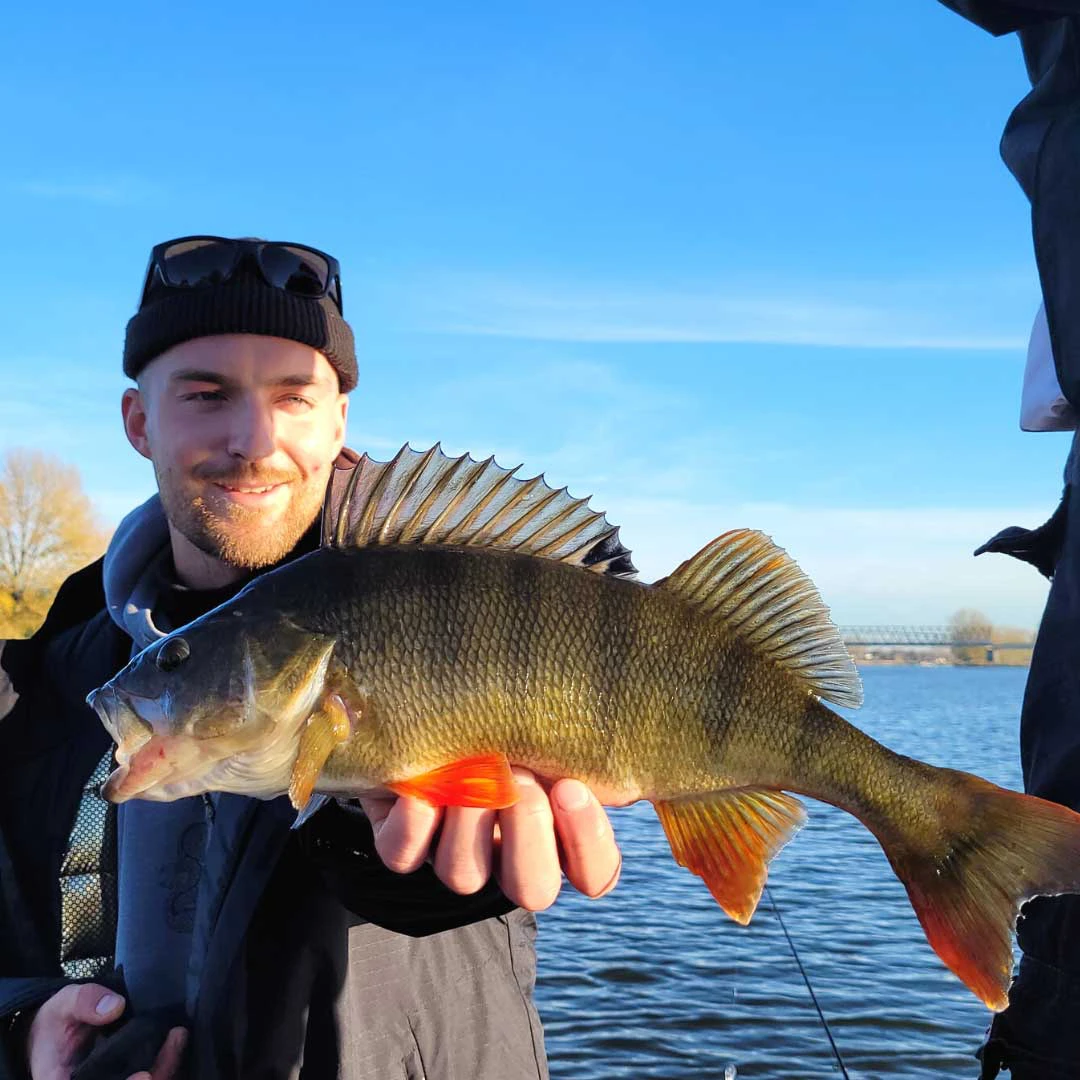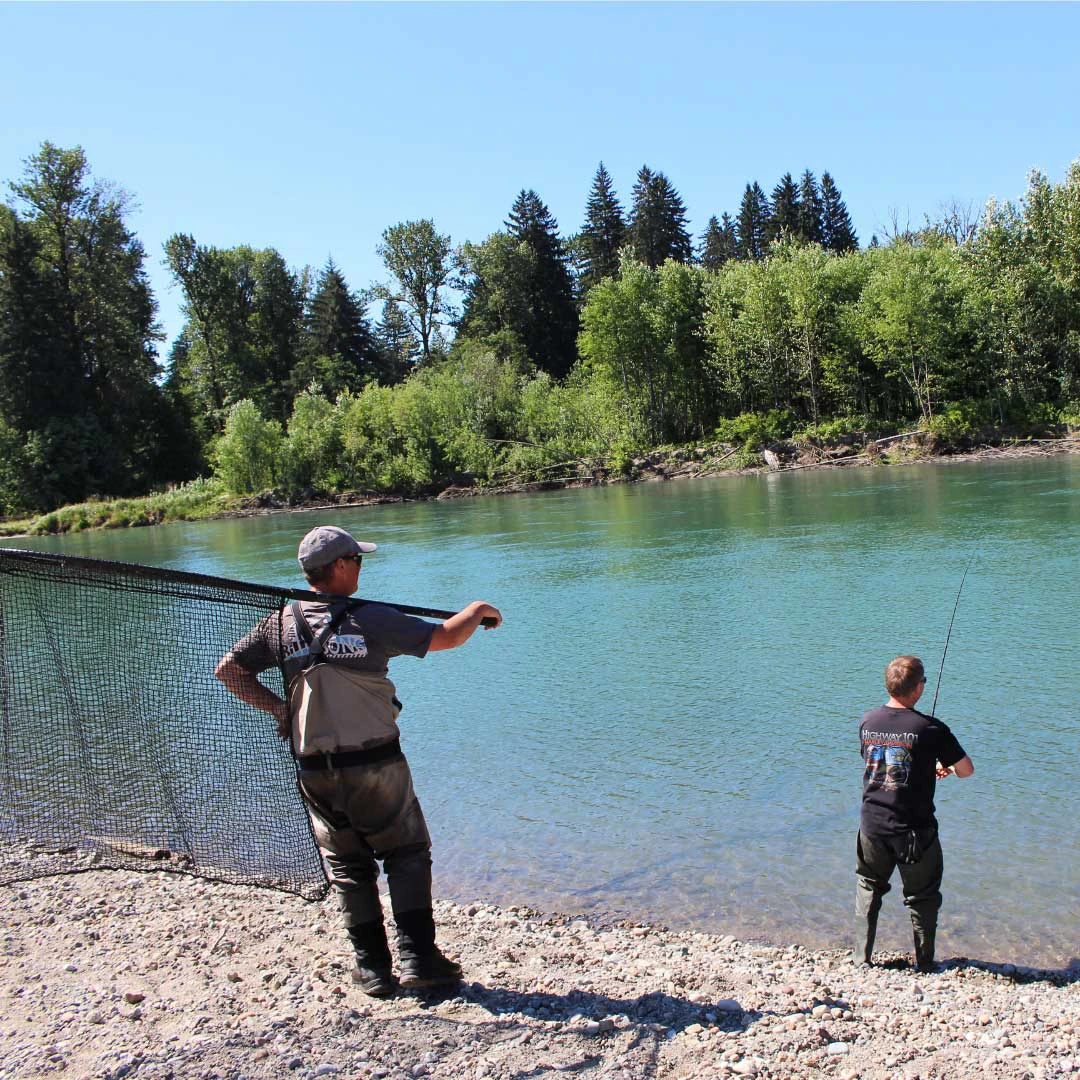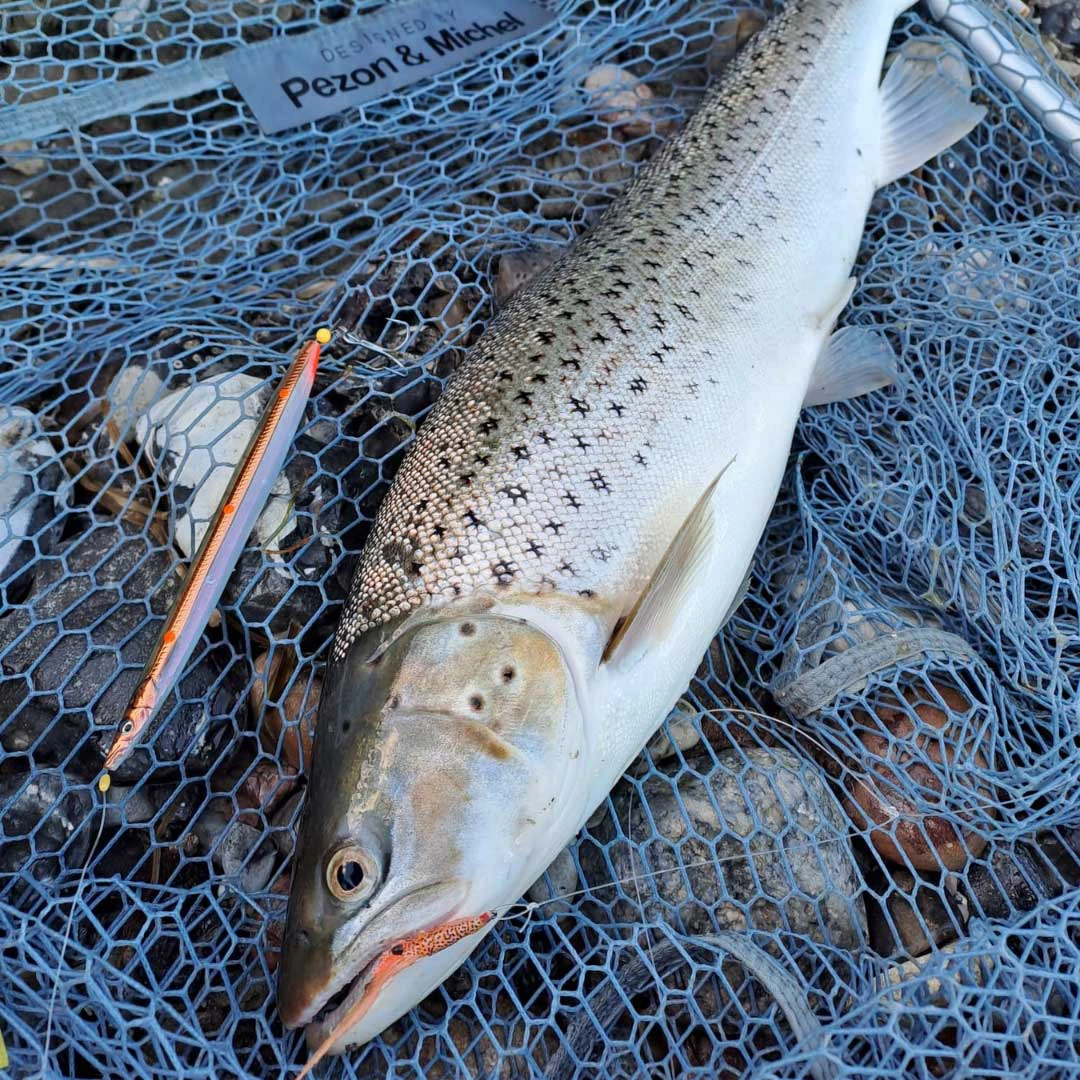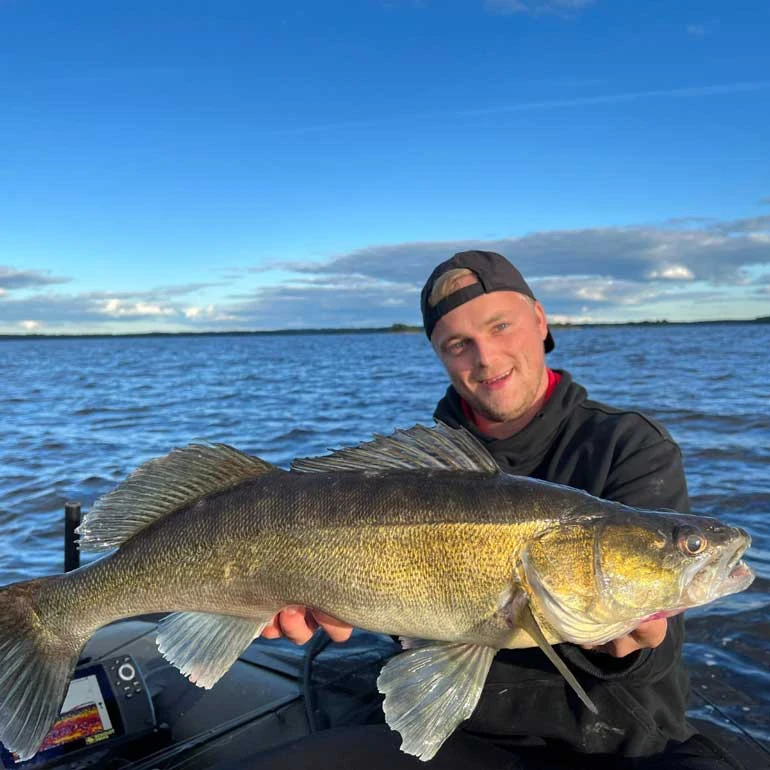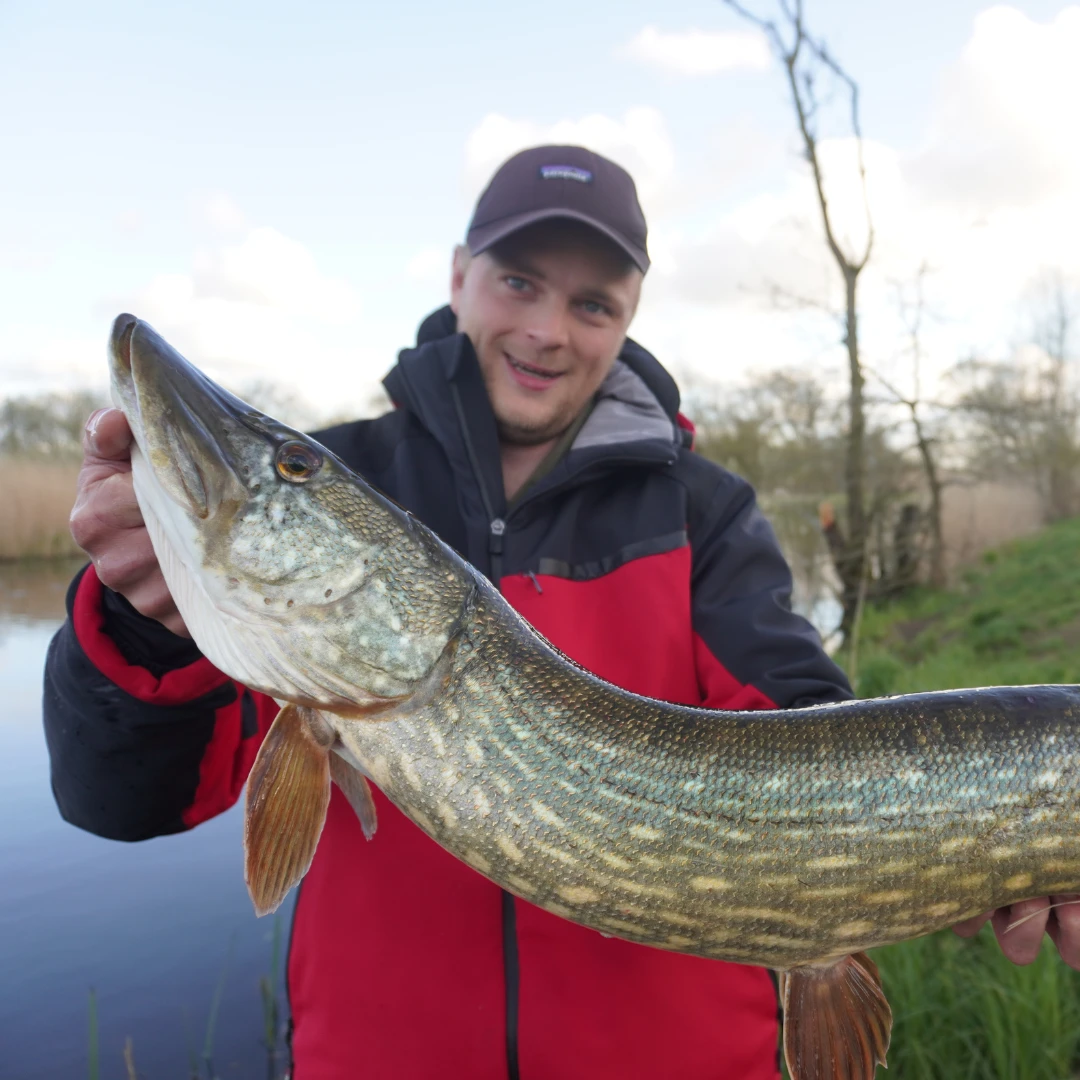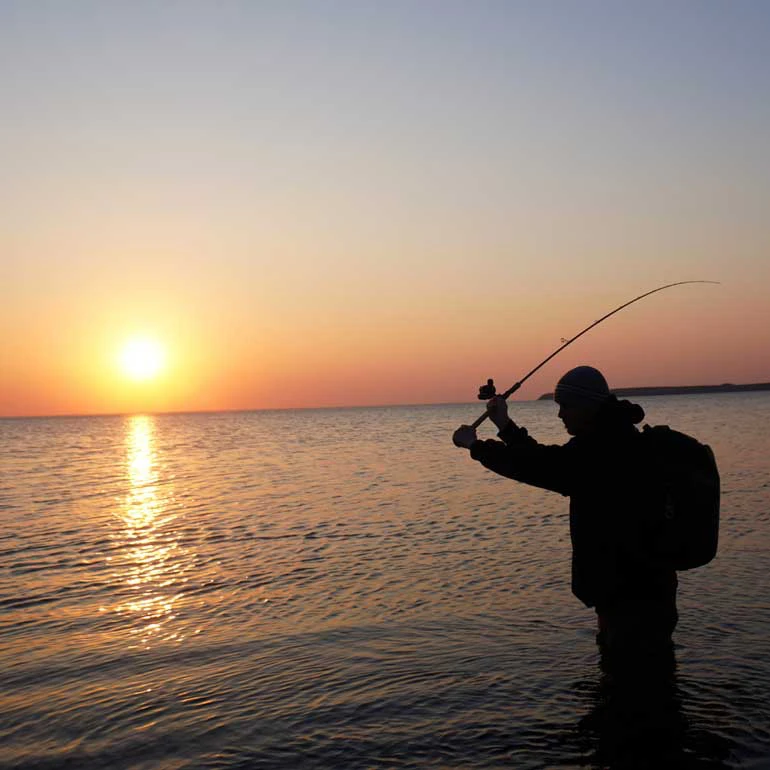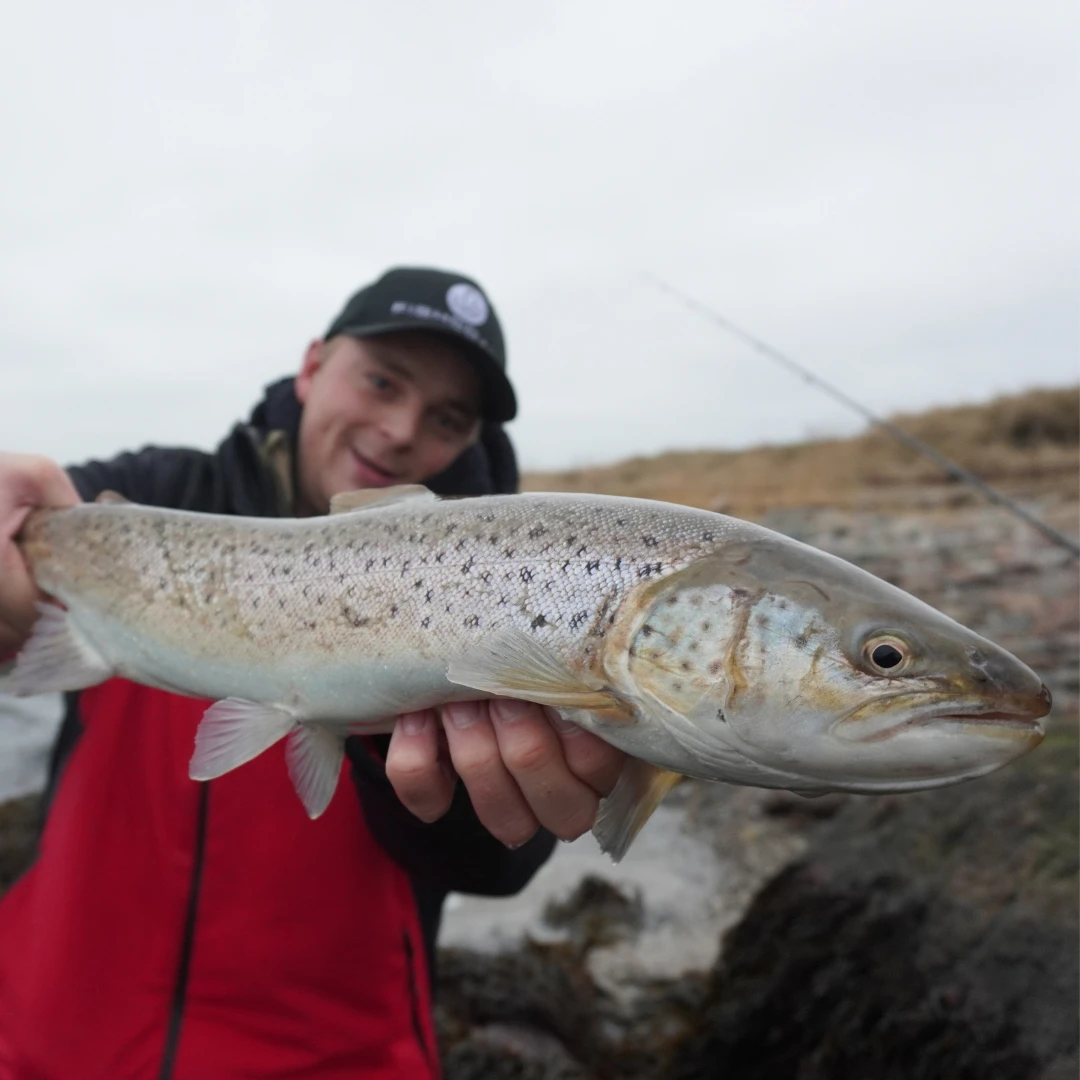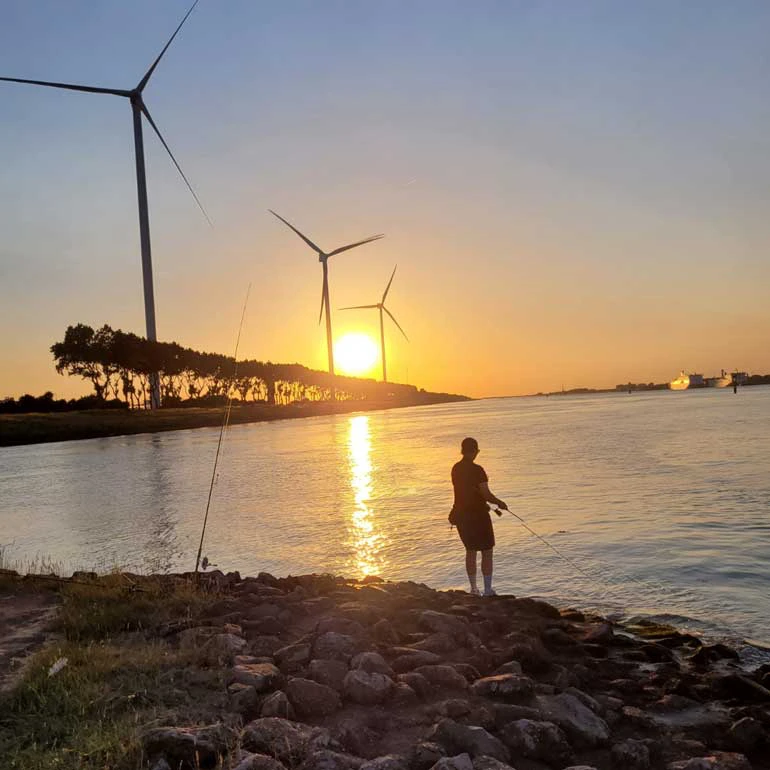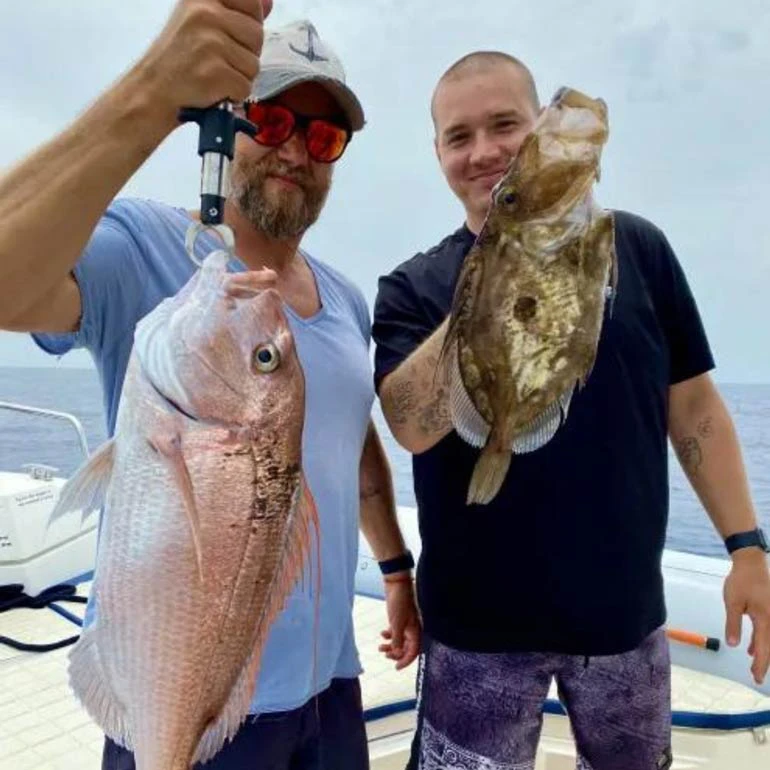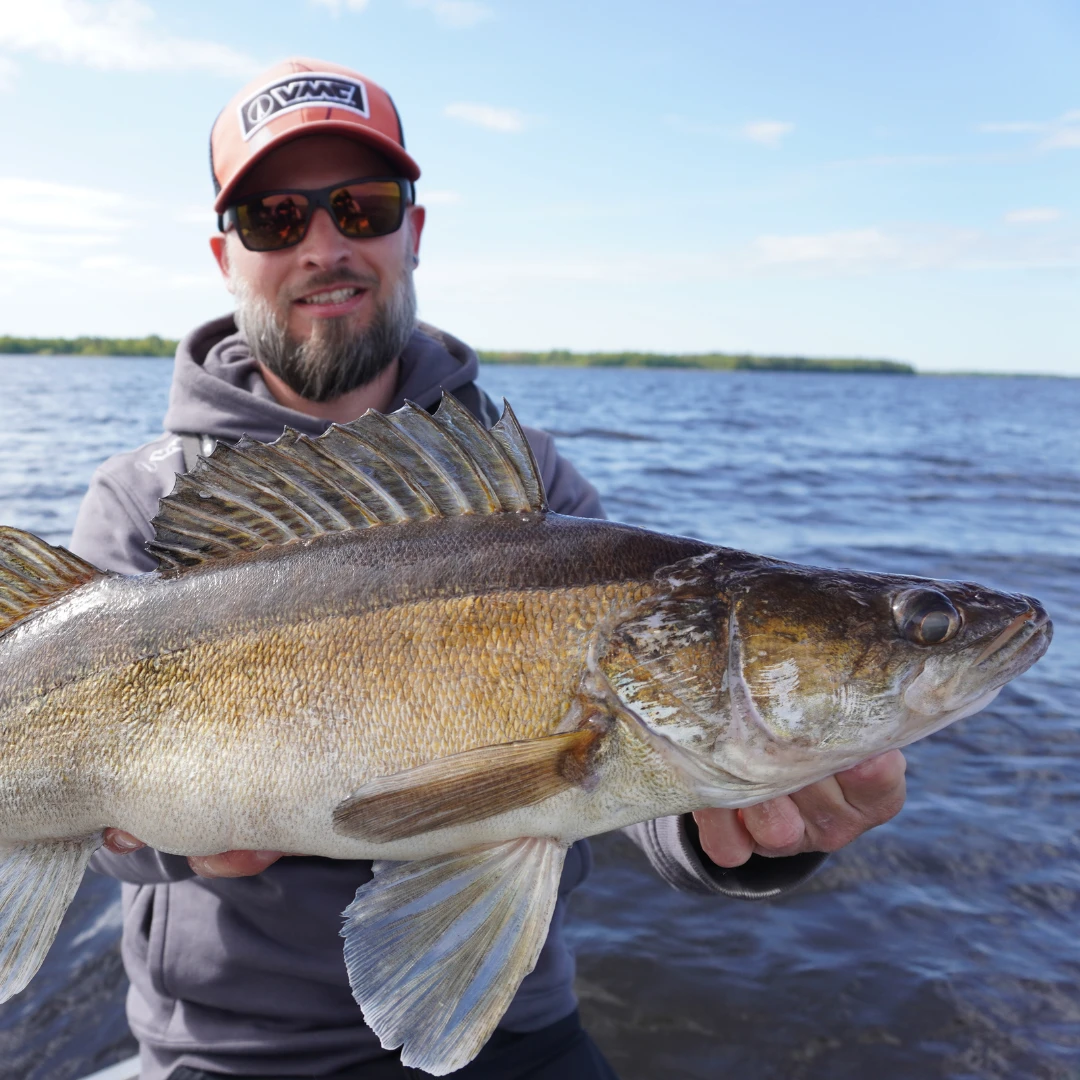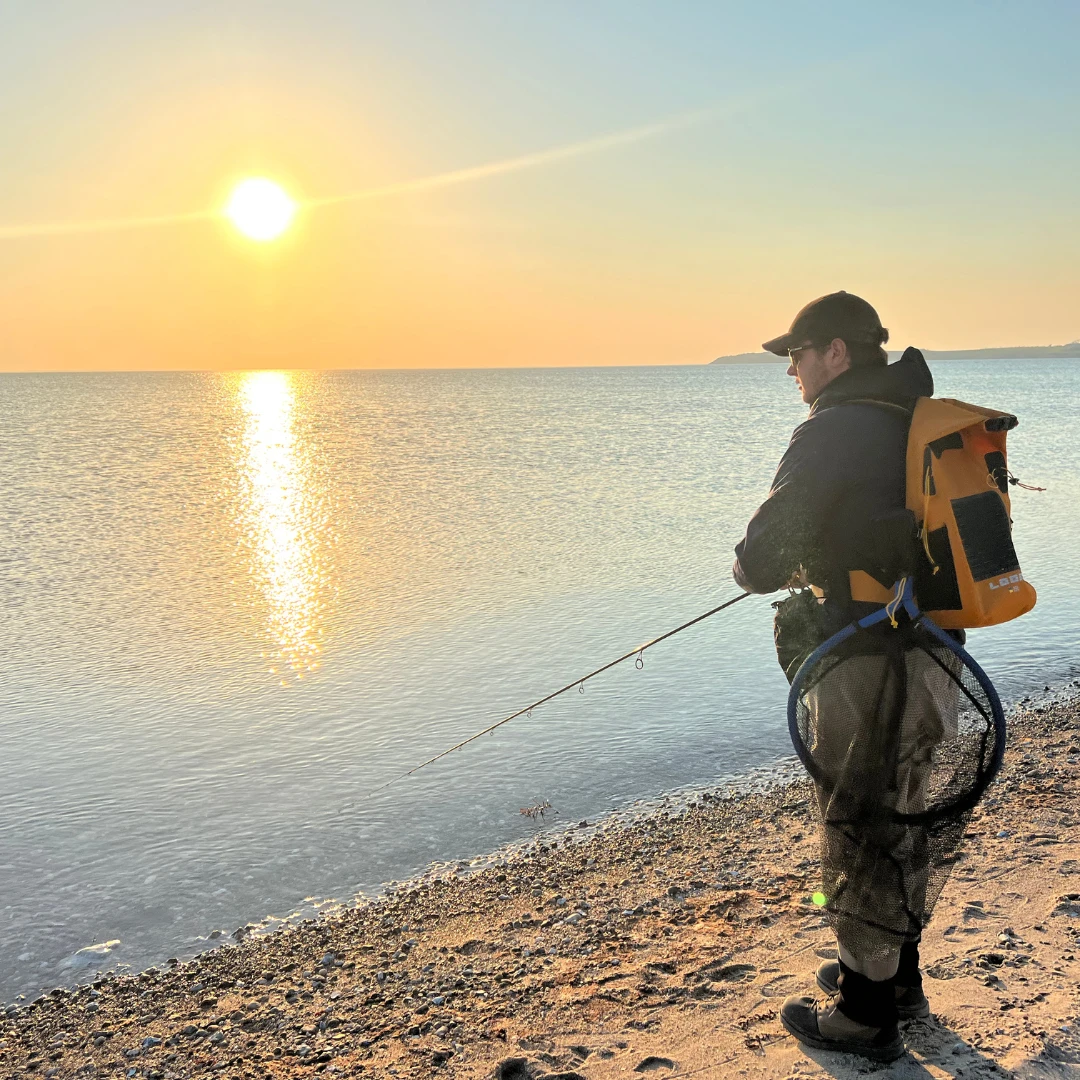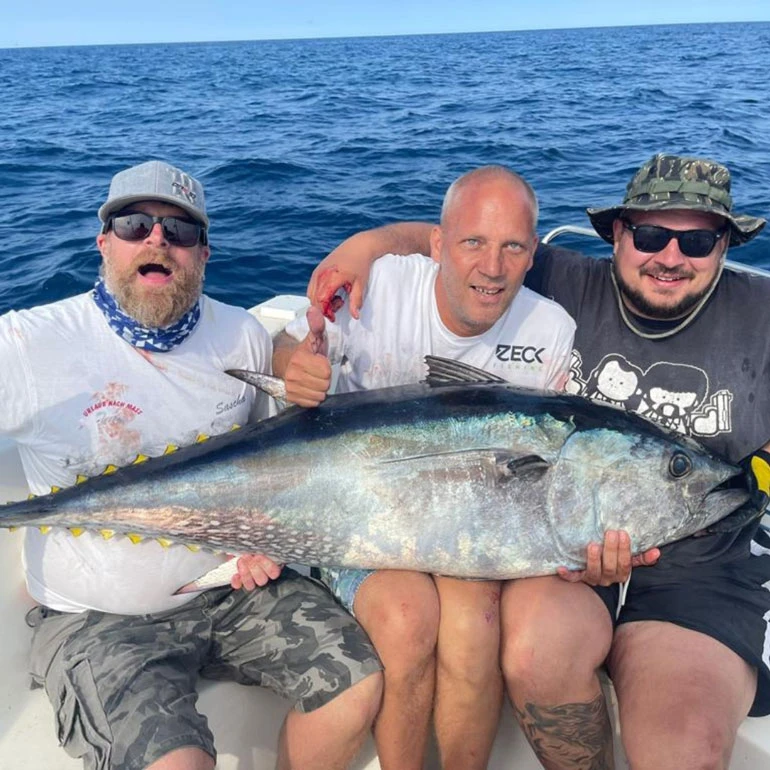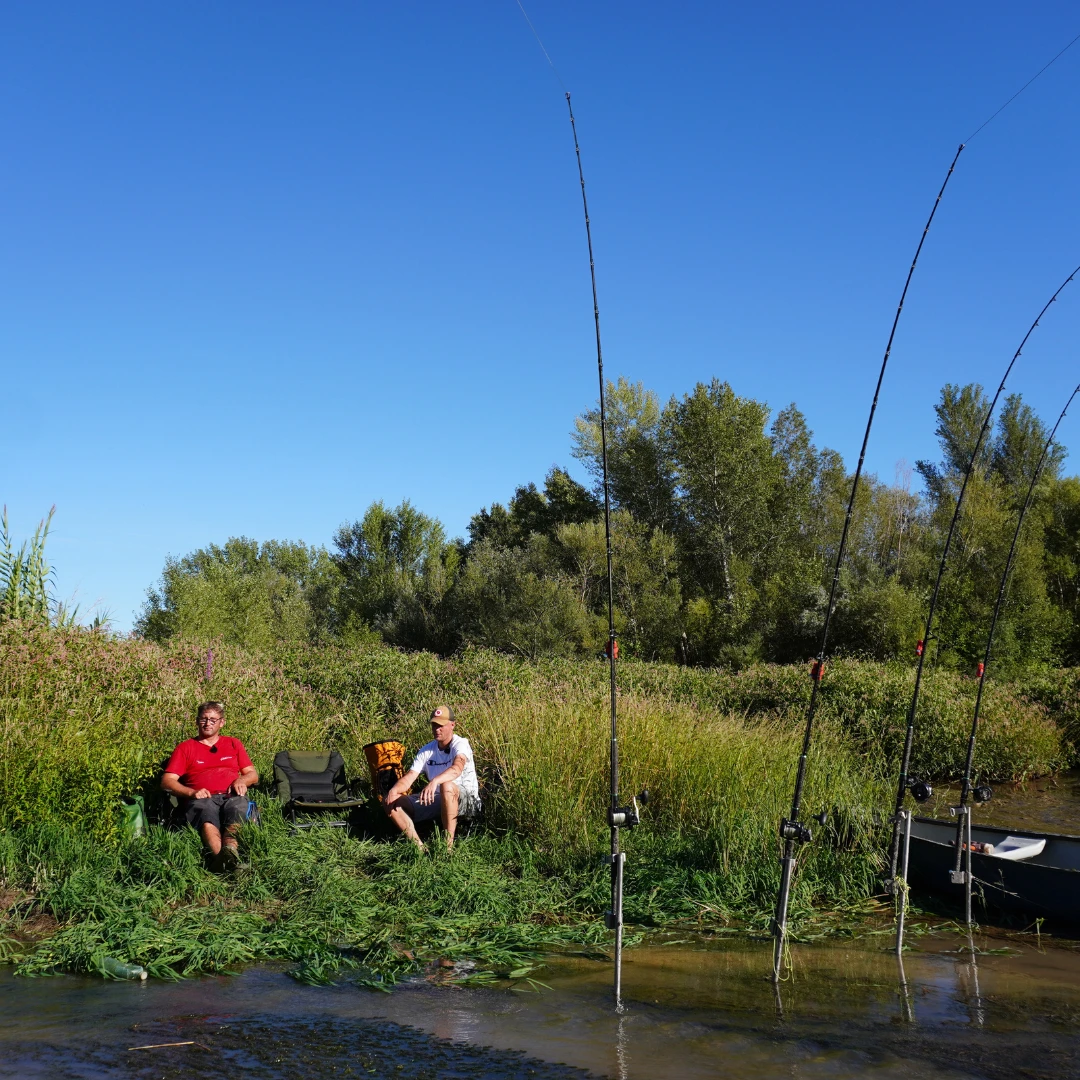
05
Oct
Pike Fishing - Consider this for catching pike!
Content: 1. Essential Gear for Pike Fishing 2. Choosing the Right Fishing Reel for Pike 3. Other Equipment for Pike Fishing 4. Typical Pike Habitats 5. Pike Fishing in Spring 6. Pike Fishing in Summer 7. Pike Fishing in Autumn 8. Pike Fishing in Winter 9. Methods for Catching Pike 10. Common Pike Fishing Rigs
Pike fishing is highly popular, and for good reason. With some basic knowledge, pike fishing is not as complicated as it may seem. Fortunately, pike are not very picky when it comes to bait selection. So, focus more on finding their likely habitats. In this article, we will provide an overview of the tackle you need for successful pike fishing.
Essential Gear for Pike Fishing
Pike fishing requires the right equipment, and it's best to err on the side of using sturdier gear rather than finer gear. Pike are relatively insensitive when it comes to line diameter or steel leaders. However, if you hook a really big one and have very fine gear, there's a higher risk of losing the fish or, worse, having the fish snap your rig with the hooks in its mouth. So, please, don't go too light.
But what exactly does "not too light" mean? Well, as mentioned earlier, there are different methods to catch pike, and the required fishing tackle varies accordingly. For example, if you're fishing with jerkbaits for pike, you should use a jerkbait rod. These rods are typically short (up to 2 meters) and quite stiff, with a casting weight range of 60-200 grams. Pay attention to the weight of your lures and choose your rod accordingly. If you prefer to fish for your target from the shore and want to be well-equipped for various conditions, a 2.7m or 3m spinning rod is a good choice. Aim for a casting weight range of 40-120 grams. With such a rod, you can effectively work almost any lure and have enough backbone to land any pike. Below is a table providing an overview of the needed rods for different scenarios. These are just guidelines and may vary based on your preferences and specific water conditions.
Choosing the right Fishing Reel for Pike
Fixed-spool reels, also known as spinning reels, are likely the most familiar and common type of reel for pike fishing. A size 4000 fixed-spool reel is a perfect choice. Depending on your budget, consider purchasing a model that costs over €45, as cheaper reels in this size range tend to offer less durability. Additionally, reels priced at €80 and above generally provide better drag systems, which can handle the runs of larger pike more effectively. Please understand that we're not making specific product recommendations but rather providing essential knowledge. You can find plenty of product recommendations online or seek advice from a specialty store.
Multiplier reels, also known as baitcast reels, can also be an option. Some anglers swear by this reel type, which is most prevalent in the United States. However, be cautious: baitcast reels are not as easy to cast as fixed-spool reels. Without proper attention, you might end up with severe line tangles on the spool. Nevertheless, a baitcast reel can make sense, especially for jerkbait or big bait fishing for pike. Generally, you can set baitcast reels to handle heavier loads compared to fixed-spool reels, which may be necessary when using heavy lures. Recommending a specific size for baitcast reels is challenging, as it is highly individual. Seek advice from a specialty store and experiment to find what works best for you. Baitcast reels allow anglers to cover more water efficiently, reducing fatigue.
Other Equipment for Pike Fishing
- Landing Net: Ensure you have a large landing net. Ideally, the net should be rubberized to prevent treble hooks from getting entangled, making it easier to release the fish.
- Tools: Carry a pair of pliers with a minimum length of 12 cm. Pike, especially large ones, can swallow the bait deep, and long pliers can help safely remove the hooks from their mouths.
- Line: Use braided line with a minimum strength of 8 kg. This typically corresponds to diameters ranging from 0.15 mm to 0.20 mm, depending on the model and price. For monofilament lines with an 8 kg strength, diameters usually range from 0.30 mm to 0.40 mm.
- Leader: Always use a steel leader. Pike have numerous small teeth that can easily cut monofilament or fluorocarbon lines. Some anglers prefer "hard mono," monofilament lines starting at about 0.70/0.80 mm in diameter, which are considered "pike-proof." However, it's still advisable to check the legal regulations in your area and use a steel leader in front of your bait. Ensure that your steel leader matches the rest of your equipment and has a minimum strength of 8 kg.
- Small Parts and Swivels: There's not much to consider here. Avoid using too small swivels and stick to a minimum strength of 8-10 kg.
Typical Pike Habitats
- Flowing Waters: Pike tend to avoid strong currents as it requires high energy to hold their position in such conditions. Their location in flowing waters depends on the specific water body and the intensity of sunlight (consider shaded areas). For slow-flowing waters like canals, creeks, or similar types, pike are likely to be found near the shores. The reduced current near the banks allows for the accumulation of prey, making them interesting areas to fish. However, pike can also be found in the middle of the water, a behavior not typically seen in fast-flowing rivers. For slow-moving, relatively narrow flowing waters, focus on exploring the shoreline thoroughly but also cast beyond the bank area to ensure you don't miss any fish.
- Shallow Waters: In shallow waters such as 2-meter-deep canals, lakes up to 5 meters in depth, or harbors, pike behavior differs. There are no deep areas for reliable orientation. Instead, you have structure. In these waters, finding the structure means finding the fish. However, the term "structure" is often used in angling jargon but rarely explained. Below are some examples of structure-rich spots that work well, especially during the cold season. In canals, you often have long monotonous stretches with no apparent "structure." However, if there's a bulkhead interrupting the usual bank structure, that's the hotspot where you should fish.
A small rise, a pile of rocks in the middle of the canal, or a slightly deeper hole than the rest of the water can be enough to hold fish. Harbors typically follow the same rule as monotonous canals. For large rivers like the Rhine, Elbe, Danube, etc., keep in mind that there are usually small pike populations in these waters. But where can you find pike in large rivers? Especially in the upper river areas with stronger currents, pike will again orient themselves toward areas with weaker flows. Any form of structure can help you find pike. This can include groins or groin pools, harbor entrances or harbors, ferry terminals, and side channels. Any area that breaks the current can potentially house pike. Conversely, this knowledge means that you shouldn't waste your time casting your line on the side of a large river where the current rushes unobstructed.
Pike Fishing in Spring
First, it's important to note that pike spawn in the spring. You must respect the relevant pike fishing regulations in your area, as there are typically closed seasons between February and May. During this time, pike move to shallow shoreline areas of large lakes for spawning. As the outside temperatures rise in the spring, so does the water temperature. The spawning period is physically demanding for the fish, and they lose weight during this time, having consumed stored energy reserves over the winter months. What does this mean? Once the spawning period is over, pike go into a feeding frenzy. Especially because many fish species spawn simultaneously, shallow water becomes a plentiful buffet for all predators. The first month after the spawning period in shoreline areas is an excellent time to catch pike of all sizes.
Pike Fishing in Summer
During the warmest season of the year, pike change their locations due to water temperature. This is closely related to the formation of a thermocline in almost all lakes, unless they are very shallow. The thermocline separates the warm surface water, heated by the sun, from the colder, denser water that sinks to the lake bottom. Oxygen-rich zones are typically found above the thermocline. The depth of the thermocline can vary significantly, but it's usually within the upper 6 meters of a lake or shallower. Since fish require oxygen to survive, you'll find pike in these oxygen-rich layers during the summer. Large pike, in particular, tend to stay in the upper water layers in open water during the summer. While shoreline areas can still be productive, especially for anglers fishing from the shore, the sizes of the fish are typically smaller. Many bodies of water have shorelines covered with vegetation, rocks, or water lilies, which offer excellent hiding spots for pike waiting to ambush prey.
Pike Fishing in Autumn
Autumn is arguably the best season for pike fishing. Changes in weather conditions lead to a vigorous mixing of still waters. Cold, deep water zones mix with the warmer surface layers due to frequent winds, creating water movement. This, in turn, disperses food throughout the entire water column. Pike feed voraciously during this time, often targeting larger prey, including fish up to 30 cm in size. So, don't hesitate to use larger baitfish or rubber lures if you're aiming for a truly large pike. In autumn, it's advantageous to fish in windward areas. The side where the wind blows pushes food with the current, attracting prey fish to that location, which, in turn, lures pike. As water temperatures drop, fishing also moves to deeper waters. Excellent spots for autumn pike fishing are steep drop-offs in water depths ranging from 4 to 8 meters. The more structure the lake bottom has, the better.
Pike Fishing in Winter
Winter brings the coldest water temperatures of the year. So, what does this mean for fish and their activity levels? First, it's important to understand that all fish significantly reduce their metabolism and conserve energy during the winter. Winter revolves around water temperature. Life mainly concentrates in the deeper water layers, as water temperatures generally don't drop below 4 degrees Celsius below a certain depth. This typically applies to waters deeper than 4 to 5 meters. So, in a cold winter, if the water surface or upper water layers are colder than 4 degrees, fish will definitely stay in the deeper areas of the water body. However, sunlight plays a crucial role. If a relatively deep body of water has shallow zones of 0-1 meter in depth that can heat up through sunlight, pike can be found in these shallow areas in winter if the warming process continues for several consecutive days.
Methods for Catching Pike
Pike can be caught using both active and passive methods. The two most common methods are spinning and dead bait fishing.
Spinfishing
When spinning for pike, your creativity has almost no limits. While zander fishing is relatively restricted, typically involving jigging or wobbling, you can catch pike with almost any lure. Whether it's soft plastic lures (jerked, jigged, or retrieved), spinners, spoons, crankbaits, topwater lures, frog imitations, and more, the key is presenting the right lure in the right spot. This means experimenting and trying different approaches. However, this doesn't mean changing your lure every third cast. Instead, select one of the mentioned lure types that you trust and thoroughly fish the hotspots in your water body. As a rule of thumb for lure presentation, the warmer the water, the faster you can work your lures. In cold water, try to provide a slow lure presentation.
Dead Bait Fishing
Dead bait fishing was more widespread in the past than it is today. In recent years, fishing with dead bait has gained popularity again, and for good reason. Dead bait fishing for pike can be highly successful, even though it involves a more static approach. Especially in winter, when pike become sluggish, the chances of success, particularly for large pike, are high.
Common Pike Fishing Rigs
Generally, you can differentiate between two types of rigs: float rigs and running ledger rigs. Both have their merits and drawbacks.
The float rig is particularly useful if you want to fish just above the bottom. You can accurately determine the water depth and present your baitfish precisely at the desired depth. With the float rig, you also have the option to "drift." This means that if it's windy when you start your fishing session, you can present the baitfish just above the bottom or even in mid-water, and the wind will carry your float in the direction from which the wind is blowing. In flowing waters or on windy days at lakes, the float rig may not be the right choice. In such conditions, a running ledger rig is recommended.
With the running ledger rig, your baitfish will remain static at a spot where you suspect pike to be. When using the running ledger rig, you also have choices to make: whether your baitfish should lie on the bottom, hover slightly above it, or even be presented with positive buoyancy. To keep your baitfish flat on the bottom, you can puncture its swim bladder; otherwise, it will float slightly. You can increase buoyancy further by attaching a floatation device, such as styrofoam, wood, or foam, to the baitfish. You can purchase buoyancy aids in most well-stocked tackle shops or attempt to craft one yourself. This way, you can present your baitfish distinctly above the lake or riverbed. Some days, this approach can make all the difference. A tip: when fishing at unfamiliar spots, present one baitfish close to the bottom and another above it, whether with a float or buoyancy aid. This way, you can see which rig attracts bites and even switch both rods to the more productive rig.
Remember, successful pike fishing requires a good understanding of the fish's behavior, the right equipment, and a bit of trial and error. Happy fishing!
